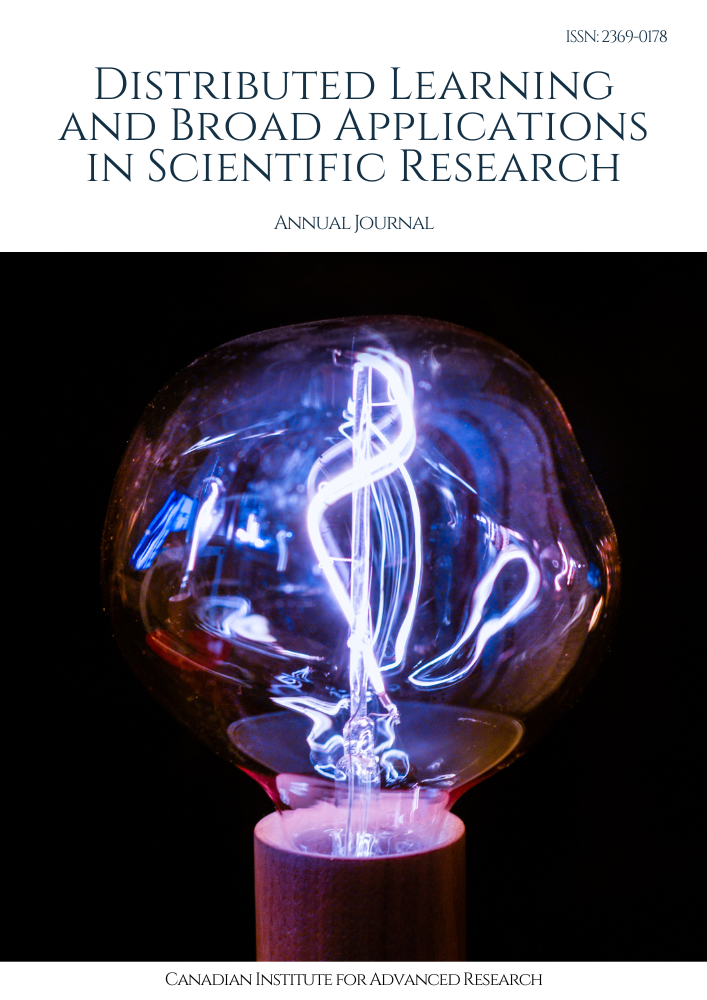Secure Communication Protocols for Vehicle-to-Vehicle Communication in Autonomous Vehicles
Keywords:
V2V communicationAbstract
The evaluation findings show that the proposed autonomous communication system for vehicles is capable for vehicular communication. Through the use of encrypted signatures, the system can protect against attacks and guarantee a safe and genuine exchange of messages between two self-driving cars. [1]
Vehicle-to-Vehicle (V2V) communication is considered an essential technology for autonomous vehicles (AVs). It has demonstrated potential to enhance safety, improve the efficiency of vehicles on roads and reduce traffic congestion at the intersections. This technology has significantly impact the road transport industry. However, security attacks can happen in AVs when attackers disturb the communication system to attempt to get control of the vehicles and cause a range of issues including system instability, reducing the safety of the transportation system and disrupting the communications between vehicles. Therefore, the V2V communication system needs to have a suitably secure communication protocol that uses authentication and encryption methods to thwart eavesdropping and manipulating messages by an adversary .
Downloads
References
Perumalsamy, Jegatheeswari, Bhargav Kumar Konidena, and Bhavani Krothapalli. "AI-Driven Risk Modeling in Life Insurance: Advanced Techniques for Mortality and Longevity Prediction." Journal of Artificial Intelligence Research and Applications 3.2 (2023): 392-422.
Karamthulla, Musarath Jahan, et al. "From Theory to Practice: Implementing AI Technologies in Project Management." International Journal for Multidisciplinary Research 6.2 (2024): 1-11.
Jeyaraman, J., Krishnamoorthy, G., Konidena, B. K., & Sistla, S. M. K. (2024). Machine Learning for Demand Forecasting in Manufacturing. International Journal for Multidisciplinary Research, 6(1), 1-115.
Karamthulla, Musarath Jahan, et al. "Navigating the Future: AI-Driven Project Management in the Digital Era." International Journal for Multidisciplinary Research 6.2 (2024): 1-11.
Karamthulla, M. J., Prakash, S., Tadimarri, A., & Tomar, M. (2024). Efficiency Unleashed: Harnessing AI for Agile Project Management. International Journal For Multidisciplinary Research, 6(2), 1-13.
Jeyaraman, Jawaharbabu, Jesu Narkarunai Arasu Malaiyappan, and Sai Mani Krishna Sistla. "Advancements in Reinforcement Learning Algorithms for Autonomous Systems." International Journal of Innovative Science and Research Technology (IJISRT) 9.3 (2024): 1941-1946.
Jangoan, Suhas, Gowrisankar Krishnamoorthy, and Jesu Narkarunai Arasu Malaiyappan. "Predictive Maintenance using Machine Learning in Industrial IoT." International Journal of Innovative Science and Research Technology (IJISRT) 9.3 (2024): 1909-1915.
Jangoan, Suhas, et al. "Demystifying Explainable AI: Understanding, Transparency, and Trust." International Journal For Multidisciplinary Research 6.2 (2024): 1-13.
Krishnamoorthy, Gowrisankar, et al. "Enhancing Worker Safety in Manufacturing with IoT and ML." International Journal For Multidisciplinary Research 6.1 (2024): 1-11.
Perumalsamy, Jegatheeswari, Muthukrishnan Muthusubramanian, and Lavanya Shanmugam. "Machine Learning Applications in Actuarial Product Development: Enhancing Pricing and Risk Assessment." Journal of Science & Technology 4.4 (2023): 34-65.
Downloads
Published
Issue
Section
License

This work is licensed under a Creative Commons Attribution-NonCommercial-ShareAlike 4.0 International License.
License Terms
Ownership and Licensing:
Authors of research papers submitted to Distributed Learning and Broad Applications in Scientific Research retain the copyright of their work while granting the journal certain rights. Authors maintain ownership of the copyright and have granted the journal a right of first publication. Simultaneously, authors agree to license their research papers under the Creative Commons Attribution-NonCommercial-ShareAlike 4.0 International (CC BY-NC-SA 4.0) License.
License Permissions:
Under the CC BY-NC-SA 4.0 License, others are permitted to share and adapt the work, as long as proper attribution is given to the authors and acknowledgement is made of the initial publication in the journal. This license allows for the broad dissemination and utilization of research papers.
Additional Distribution Arrangements:
Authors are free to enter into separate contractual arrangements for the non-exclusive distribution of the journal's published version of the work. This may include posting the work to institutional repositories, publishing it in journals or books, or other forms of dissemination. In such cases, authors are requested to acknowledge the initial publication of the work in this journal.
Online Posting:
Authors are encouraged to share their work online, including in institutional repositories, disciplinary repositories, or on their personal websites. This permission applies both prior to and during the submission process to the journal. Online sharing enhances the visibility and accessibility of the research papers.
Responsibility and Liability:
Authors are responsible for ensuring that their research papers do not infringe upon the copyright, privacy, or other rights of any third party. Scientific Research Canada disclaims any liability or responsibility for any copyright infringement or violation of third-party rights in the research papers.
If you have any questions or concerns regarding these license terms, please contact us at editor@dlabi.org.



